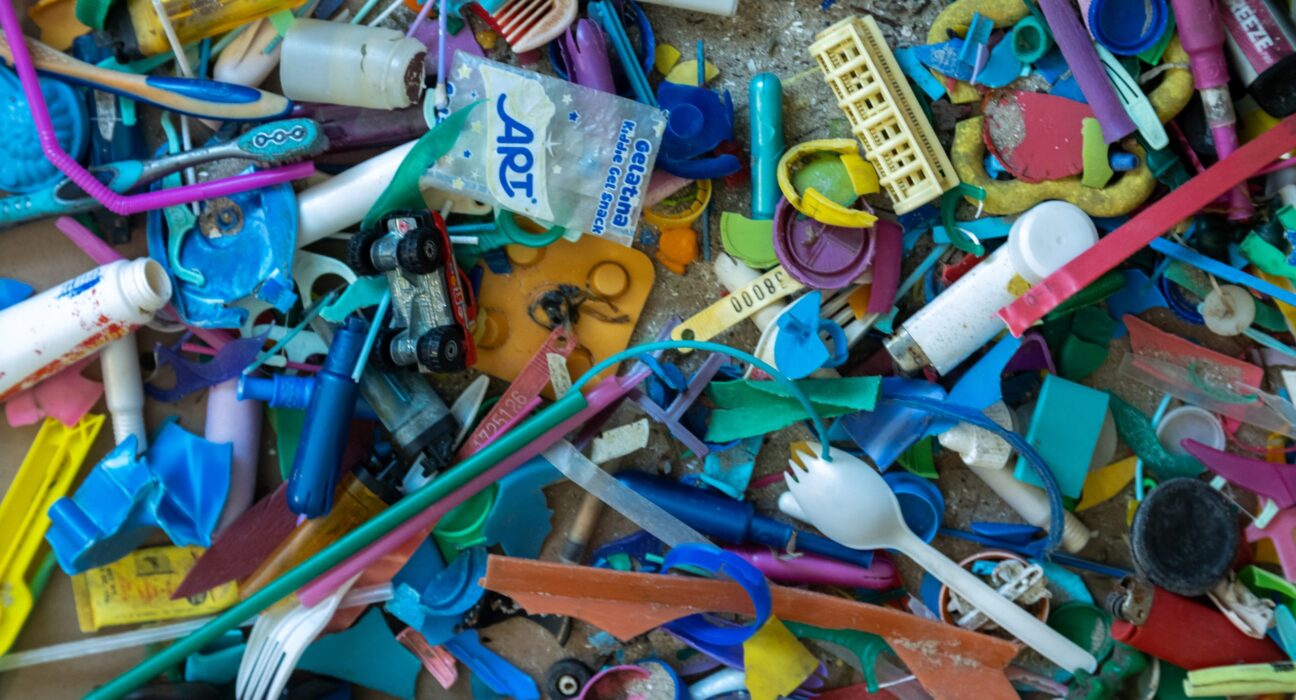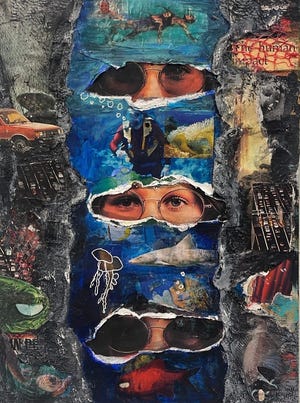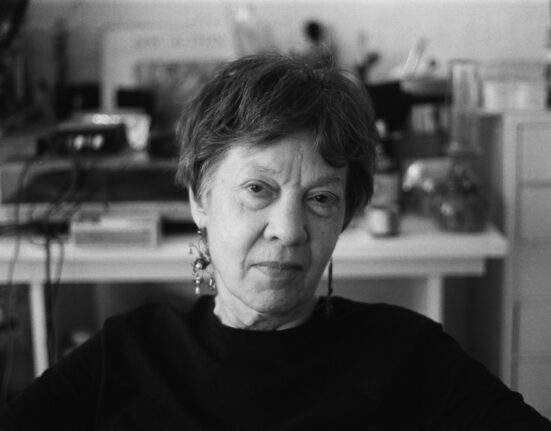Waist deep in the Rouge River, 75 volunteers in fishing waders hauled plastic bottles, Styrofoam, and tires out of the Eliza Howell Park forest.
On the shores of Lake Erie, volunteers collected bottle caps, shotgun shells, food wrappers, and other plastic, totaling 9,000 pieces of trash.
Halima Cassells and Hannah Tizedes are among the local artists turning the litter into art, working with separate nonprofit organizations to reuse the trash. The work seeks to raise awareness and inspire action regarding climate change, environmental degradation, and plastic pollution.

“I’m a little bit overwhelmed with all of this stuff that’s coming out, and it keeps coming,” said award-winning Detroit artist Cassells at Saturday’s cleanup at Eliza Howell. Throughout the day, volunteers brought her 5-gallon buckets and large bags full of trash from the river to be sorted. “It’s great so many people showed up; it’s really inspiring.”
The cleanup was the kick-off event for Cassells’ eco-artist-in-residence role at local nonprofit Sidewalk Detroit. She’ll be part of a program to address climate change through the lens of art.
Research shows that presenting science and facts alone often isn’t enough to make people care about climate change. But evoking emotion through art can make a difference. Last year’s National Climate Assessment, written by more than 700 scientists, featured visual art for the first time.
Across Detroit, people are finding unique ways to turn trash into art, building on a lineage going back several decades.
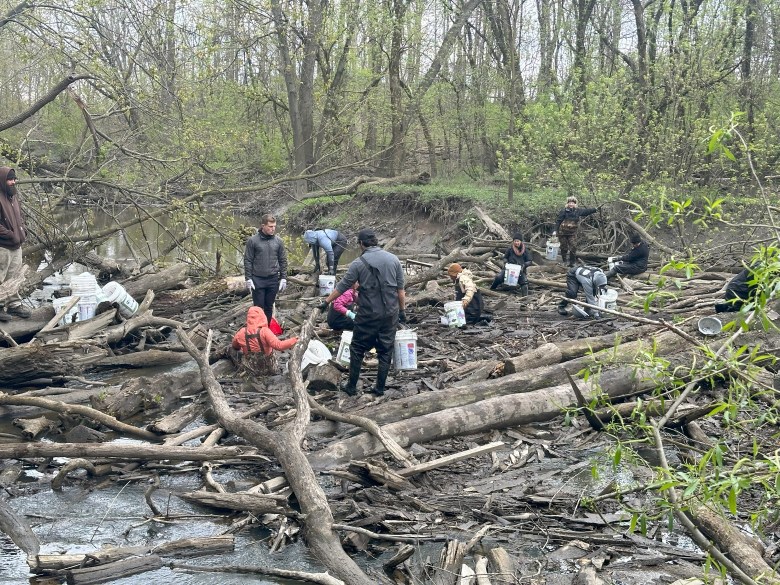
In the 1970s, Cassell’s relative, Matt Corbin, began using trash for art installations after being inspired by an exhibit at the Detroit Institute of Arts, while a student at what is now the College for Creative Studies.
Decades later, the former Detroit public schools art teacher is still turning trash into art, using litter that is frequently dumped in his neighborhood. He has sold the pieces to former city council members and other artists, and has had installations around the city.
“What kept me doing it is that there’s more stuff, so much stuff. I mean, every day I pick up stuff off the street,” he said, picking up flattened drink cans he found on the street. “Why would I go down to Blick (art store) and buy paint when the color is already out here?”

Cassells’ work was influenced in part by growing up in Detroit and visiting The Heidelberg Project.
Tyree Guyton and his grandfather, Sam Mackey, started the project in the 1980s by cleaning up vacant lots on Heidelberg St. in Detroit and using the items they found to create art. This birthed The Heidelberg Project, a free outdoor art attraction. The art gallery has generated millions for the local economy and seen 200,000 visitors each year.
Although the 75 volunteers worked for four hours Saturday, they managed to clean up an area no bigger than the size of a basketball court, The Rouge River is more than 126 miles long. . The most common item they found was plastic.
Plastic resists chemical and biological degradation, so it never really goes away. Once in the environment, it breaks down into harmful microplastics that can enter the bloodstream and have been linked to serious health issues. The Rouge River flows into the Great Lakes, where more than 22 million pounds of plastic is deposited each year.
As a part of her residency, Cassells will lead three workshops on turning trash collected from the Rouge River into an art installation that will live at Eliza Howell Park.
The Rouge River project adds to Cassells’ expansive portfolio of eco-art. Last year, as a Kresge artist fellow, Cassells and another Kresge awardee, Shanna Merola, created an art installation made with mushrooms, plants and trash, as a commentary on the environmental destruction caused by colonialism and climate change. Other past projects have included designing her own fermentation vat to dye cotton with indigo and installations around Detroit made of reused and recycled items.
“So many of these things were used once, and then now, what do we do with it?”
In an attempt to tackle plastic pollution, Michigan Democrats sought last year to reverse a ban on banning plastics enacted in 2016. If repealed, local governments in the state could ban plastic bags and other similar one-use plastic utensils, cutting down on plastic waste. The bill is in the House. In 2022, Canada passed a similar law prohibiting the manufacture, sale, and import of many single-use plastics.
Plastic bottle caps to mosaics
Hannah Tizedes found inspiration after going to Lake Erie while growing up.
“It’s an interesting beach because it sits right by a coal plant—the DTE Energy plant—and it gets a ton of pollution,” she said.
A room in her apartment is filled with 100,000 tiny, colorful plastic pieces she’s collected over the last several years from cleanups around the state, including at Lake Erie. A jar filled with tampon applicators sits on a closet shelf next to a jar filled with straws, and another entirely filled with plastic sticks from cotton swabs, among countless other jars—all trash found on Michigan beaches.
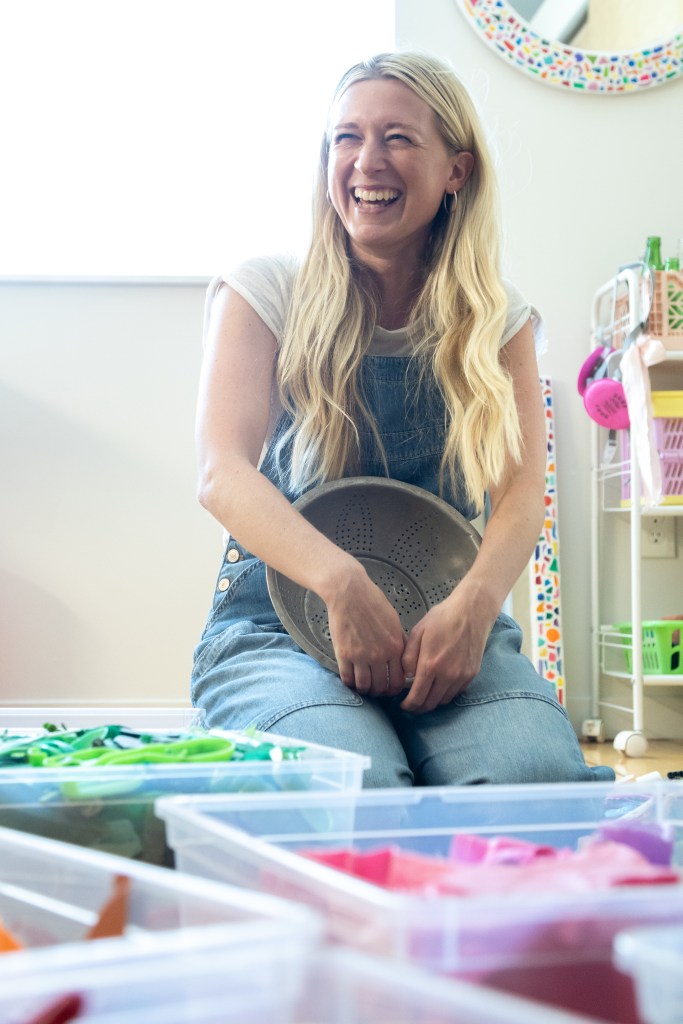
For her art—mosaic-style mirrors, images, and temporary installations—Tizedes only keeps the colorful pieces, using them to educate people about plastic pollution.
“So much of my art is just making sustainability more fun and approachable,” she said. “If you’re looking at a bunch of plastic bottles, it just feels a little daunting, like, trashy.”
Tizedes said people don’t even realize her art is made with trash.
“It brings light to all this stuff that we don’t realize is washing up on the beaches, like hair clips,” she said, picking one up from the pile spread across her art studio and a bottle from the 1970s. “All of this stuff is just random.”
The thousands of pieces are a tiny fraction of the trash Tizedes has collected since she began a decade ago while studying studio art at Michigan State University.
Building on her passion for reusing trash for art and education, Tizedes founded The Cleanup Club a year ago. The nonprofit organizes cleanups of the Great Lakes and other communities. Last year, The Cleanup Club removed more than 35,000 pieces from the lakes alone, not counting the trash collected in neighborhoods.
The most common item they find at cleanups is plastic bottle caps, said Tizedes.
“A lot of the stuff is being left on the beach, but a lot of it’s been in the water, and it comes down the Detroit River and then washes up on shore,” she said. “Detroit is a huge contributor to Great Lakes plastic, so are Cleveland, Toronto, all big cities.”
The Cleanup Club is an unpaid side venture for Tizedes. For her day job, she works as a community manager at the 5 Gyres Institute, a global nonprofit focused on reducing plastic pollution. Occasionally, Tizedes sells the mirrors and prints she makes, but educating people about pollution is the priority, she said.
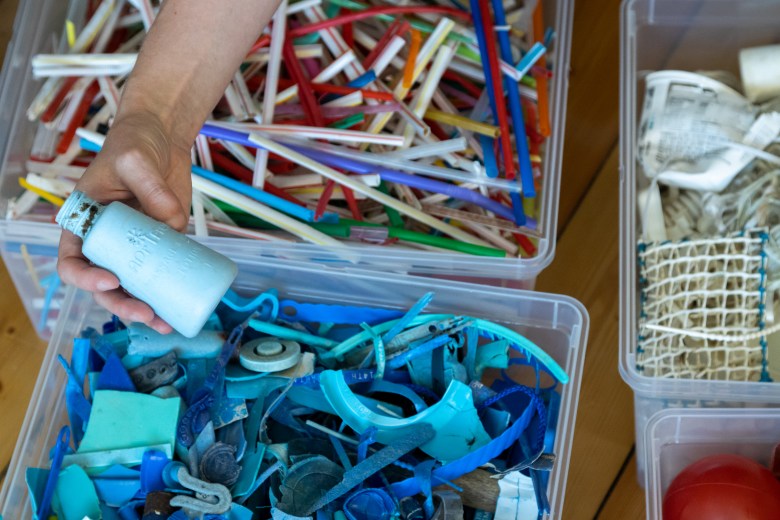
This year is poised to be even bigger for The Cleanup Club. Earlier this month, the organization broke its own records for the trash most picked up at a single event. Volunteers collected more than 1,300 pounds from the Milwaukee Junction neighborhood in Detroit.
“ I didn’t think it would take off in the way that it has,” said Tizedes. “But it’s been so cool to see more people coming out.”
Interested in getting involved? Check out this list of eco-art events coming up around the city.
Get engaged with eco-art:
April 22
April 28
May 15
- Eco-art workshop with Halima, 1-7 p.m. at Eliza Howell Park, 23751 Fenkell Ave., Detroit
June 6
- Eco-art workshop with Halima, 4-7 p.m. at Eliza Howell Park, 23751 Fenkell Ave., Detroit
June 22

